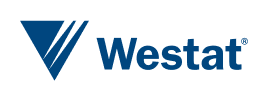This website uses cookies so that we can provide you with the best user experience possible. Cookie information is stored in your browser and performs functions such as recognizing you when you return to our website and helping our team to understand which sections of the website you find most interesting and useful.
How can errors in school meal programs be reduced?
Estimating payment errors in the National School Meal Programs with Access, Participation, Eligibility, and Certification (APEC)

Challenge
The National School Lunch Program (NSLP) and the School Breakfast Program (SBP) provide critical nutrition to school children. On an average school day in 2019, the NSLP served lunches to 29 million children, most of whom qualified to receive the meals for free or at a reduced price.
Inherent in the administration of a large national program is the potential for program and payment errors. The U.S. Department of Agriculture’s (USDA’s) Food and Nutrition Service (FNS) commissioned 3 studies, known as Access, Participation, Eligibility, and Certification (APEC), to obtain national estimates of program and payment errors.
Westat will conduct the 4th study, APEC IV, to calculate updated national estimates of errors for the 2023-24 school year. Westat previously conducted APEC III and collaborated on APEC II.
Solution
APEC IV will build on the previous APEC studies, and examine how characteristics of students, schools, and school food authorities affect program and payment errors. The study also includes several enhancements:
- Evaluate whether USDA’s online application prototype generates a more accurate and complete accounting of household size and income
- Examine the mode effect of in-person vs. telephone interviews on the household survey
- Test the use of cameras to capture data on the components of students’ meal trays
This study will use computer-assisted personal interviewing (CAPI), computer-assisted telephone interviewing (CATI), and computer-assisted web interviewing (CAWI) software across a wide variety of platforms (smartphone, tablet, desktop) during data collection.
Results
The results of the first 3 APEC studies led FNS to create strategies for better fiscal management and streamlined implementation of the program, and to ensure that benefits are received by those in need.
APEC IV will determine if reforms have reduced errors and if the current rates meet the federal targets. It will produce policy and procedural recommendations to reduce errors.
Learn more:
Third Access, Participation, Eligibility, And Certification Study (APEC-III), School Year 2017-18 | Food and Nutrition Service
Focus Areas
Food and Nutrition Social ServicesCapabilities
Advanced Technologies Analysis and Modeling Blaise Data Collection Data Collection Modes Statistical MethodsSenior Expert Contact

Debra Wright
Associate Vice President
-
Perspective
Teacher Apprenticeships Strengthen the WorkforceJuly 2024
Many state education agencies (SEAs) are addressing teacher shortages by creating and expanding alternative paths to the teaching profession. One fast-growing option is teacher apprenticeships,…
-
Expert Interview
Passport to Careers: Aiding Foster and Homeless Young AdultsJuly 2024
The Passport to Careers program in Washington State supports former foster youth and homeless youth unaccompanied by a parent or guardian in achieving their college…
-
Perspective
Highlights of Westat at AAPOR 2024May 2024
We’ve returned from the 79th Annual American Association for Public Opinion Research (AAPOR) Conference, held May 15-17 in Atlanta, where we caught up with colleagues…



